Charger Brillipower BIC-2

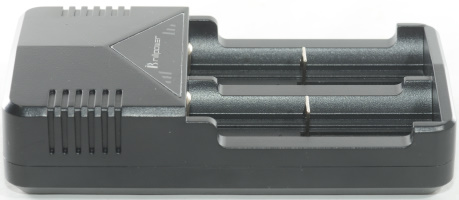
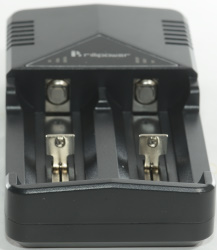
This is a simple charger that can handle NiMH and LiIon cells and has one charge current.
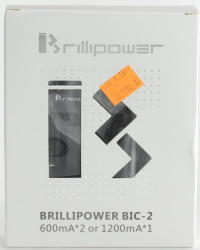

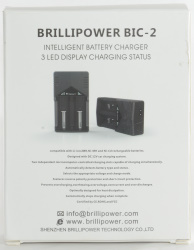

The charger comes in a cardboard box with some information on the back.
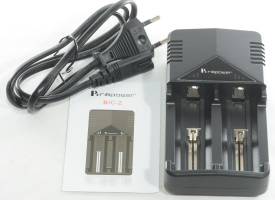
The pack contained the charger, a mains cable and a instruction sheet.
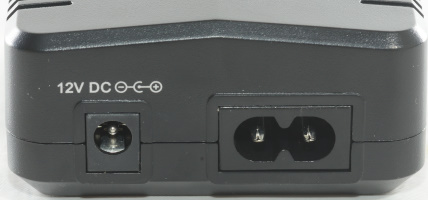
The charger has mains input and 12V DC input.
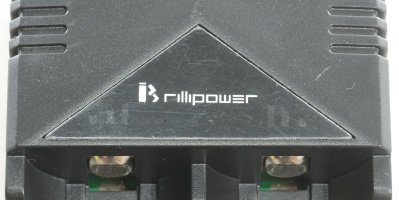
The user interface is 3 blue leds for each slot, they are animated while charging and all will be steady on when the battery is full.
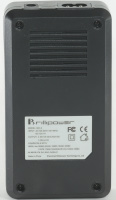
The charger is supposed to support both 4.2V and 4.35V cells, but there is no way to select charge voltage.
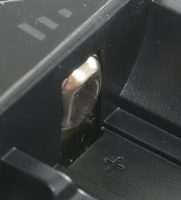
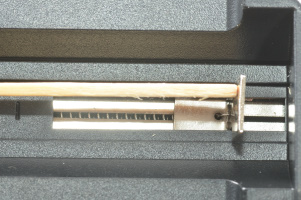
The charger uses the classical slider construction, it will handle from 34mm to 70.5mm long batteries. This means it will handle nearly all the long batteries.


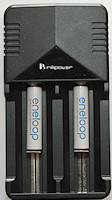
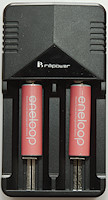
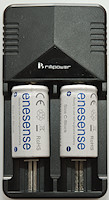
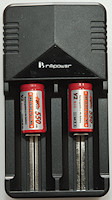
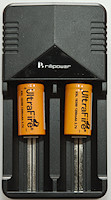
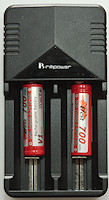



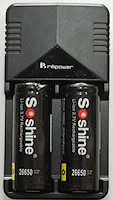
The charge current is too high for smaller cells.
Measurements on charger
- LiIon batteries will be discharged with 1.5mA when power is off.
- LiIon batteries will be charged with 0.5mA when power is on.
- NiMH batteries will be discharged with 0.5mA when power is off.
- Below 0.3 volt the charger will charge with lower current trying to start battery and flash all the blue leds.
- Below 1.5 volt the charger assumens NiMH batteries.
- Between 1.5 volt and 2.2 volt the leds are off and the charger is not charging.
- At 2.2 volt and above the charger assumes LiIon.
- Power consumption when idle is 0.3 watt.
- Charger will not restart if battery voltage drops.
- Charger will restart on battery insertion and power cycling.
Charging LiIon

The charge is a CC/CV curve with termination around 100mA

It is the same on the second channel.
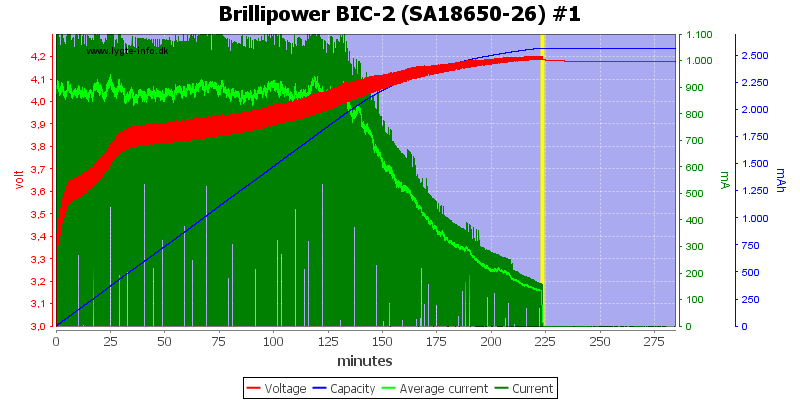
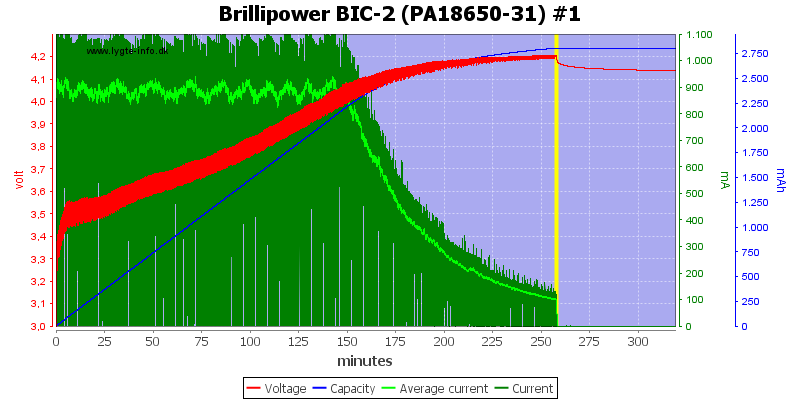
Other capacities is handled fine.
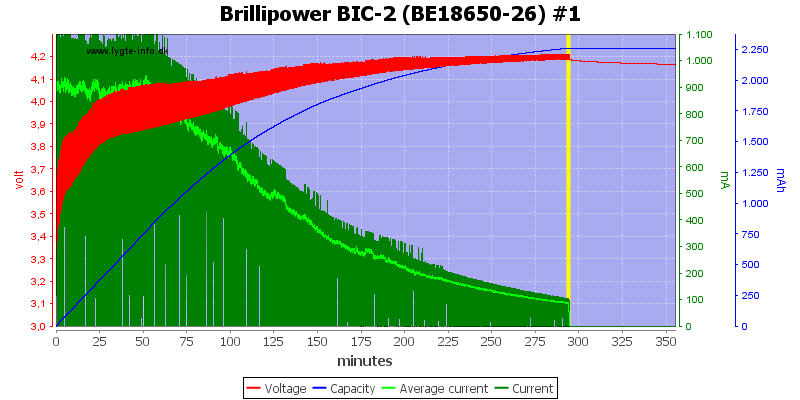
Even a old cell with fairly high internal resistance.
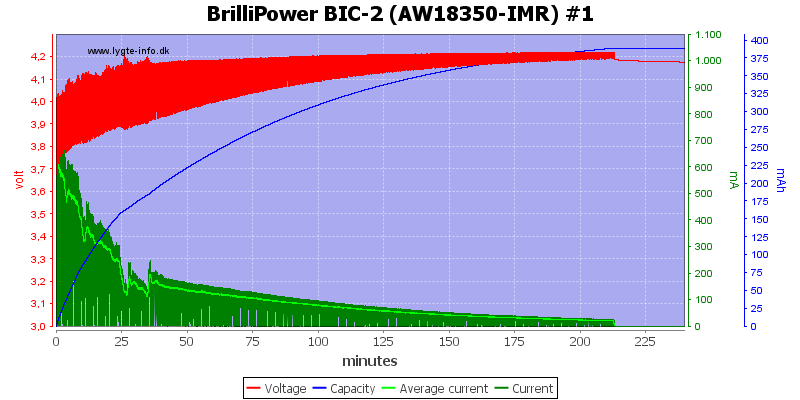

Small cells are charged with too high current, but the charger do fill them.
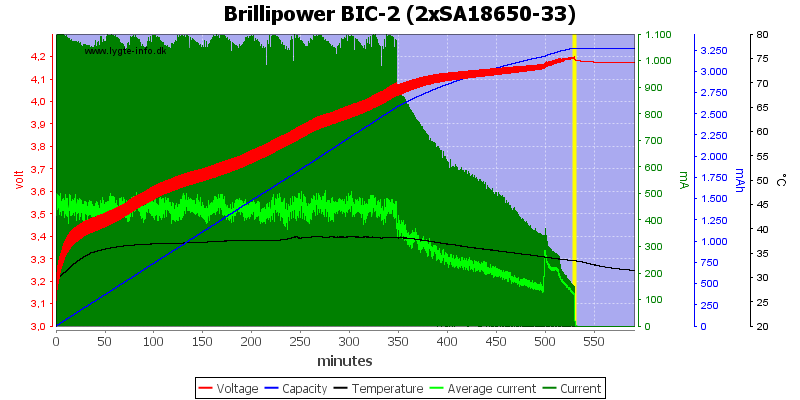
With two cells the average current is halved, at 500 minutes cell #2 is full and cell #1 get the full current.

The charger needs about 600mA from an external 12V power supply.
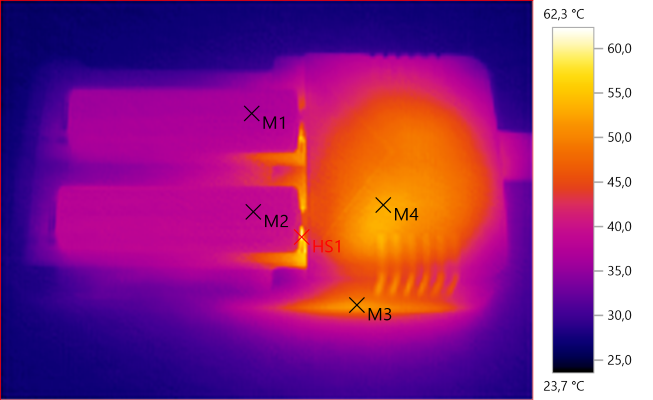
M1: 36,6°C, M2: 38,7°C, M3: 51,5°C, M4: 53,0°C, HS1: 62,3°C

The charger needs about 2 seconds to start.
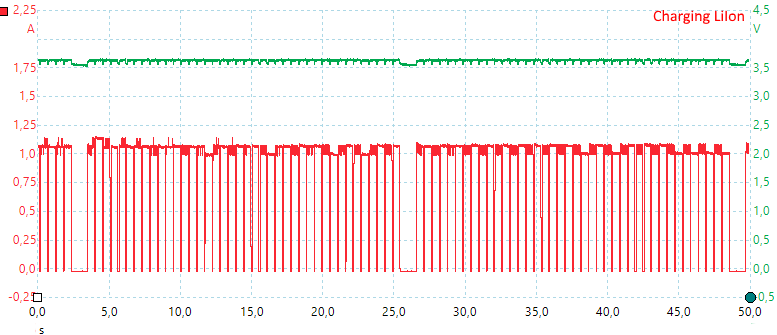
It has two types of pauses, some fairly short and some longer about every 20 seconds.
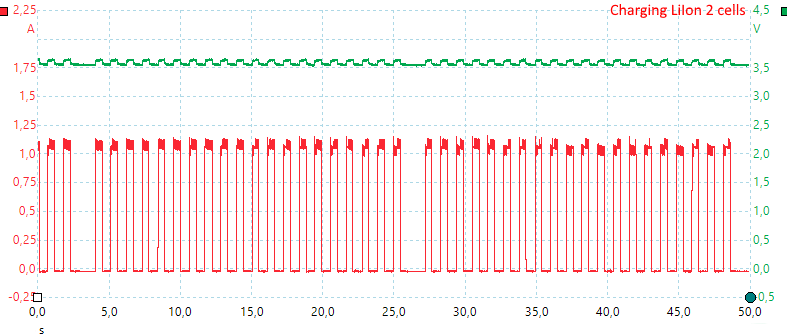
The short pauses is used for timesharing, i.e. switching the current to the other cell when there are two cells.
Charging NiMH

This is a voltage termination, but without top-off charge, there is a obvious temperature raise, i.e. the cell is full.
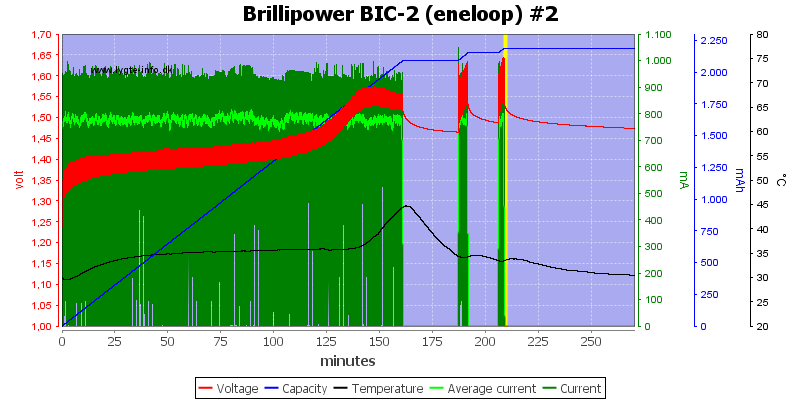
This time it uses a -dv/dt termination, but it charges a bit more later on.
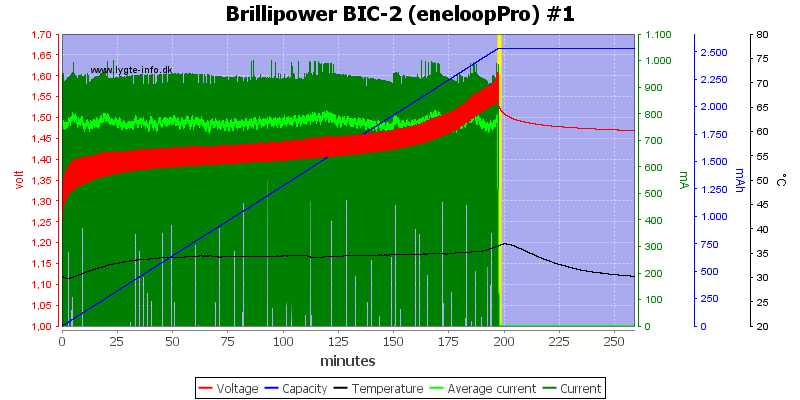
A voltage termination.

This old cell do not really work anymore. The charger did put some energy into it, before it terminated the charge.
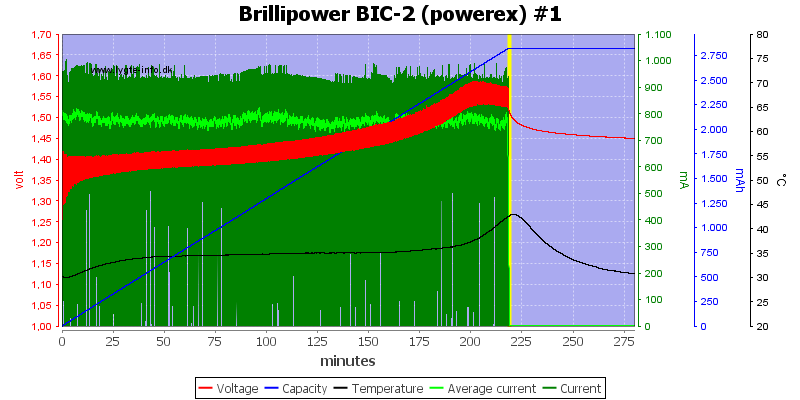
On this cell a -dv/dt termination is used.
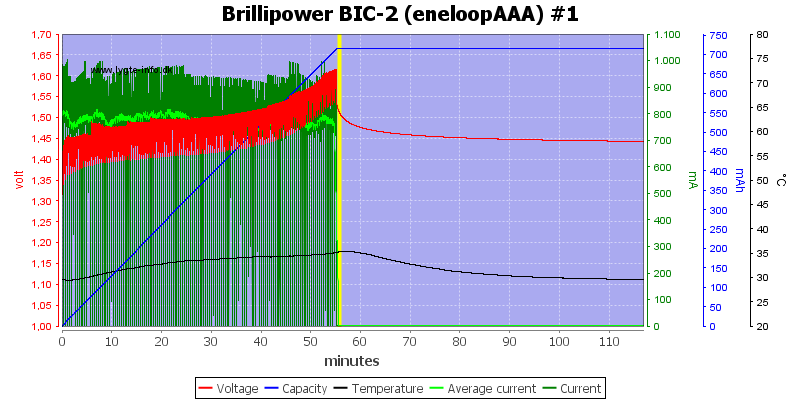
The charger current is on the high side for AAA cells, this makes the charging fast.
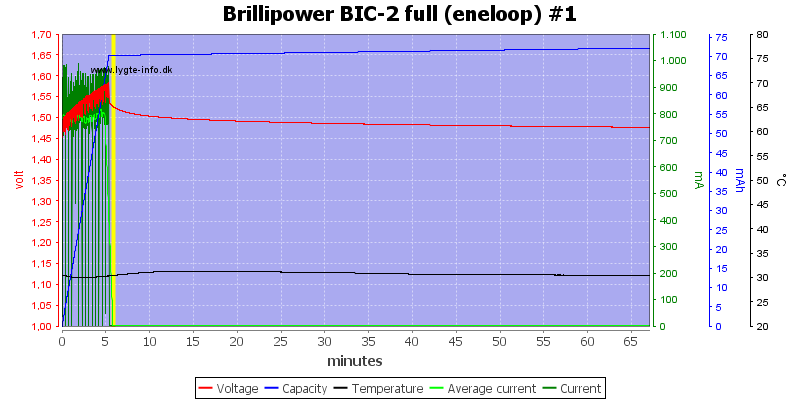
A full cell is detected in about 5 minutes.
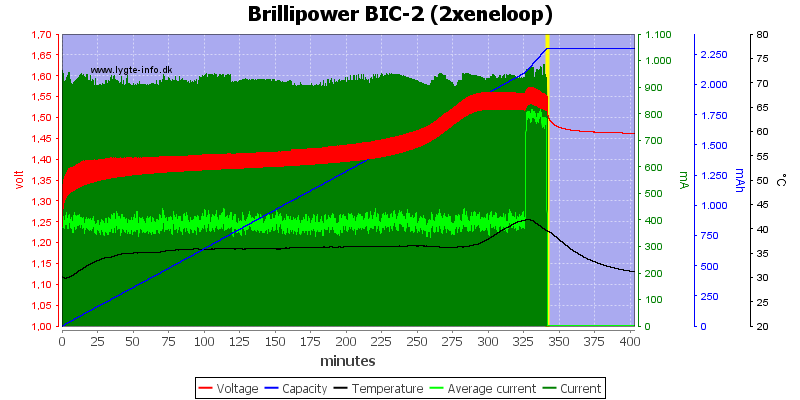
With two cells the current is reduced and that means problems with termination. The charger could have terminated 30 minutes earlier.
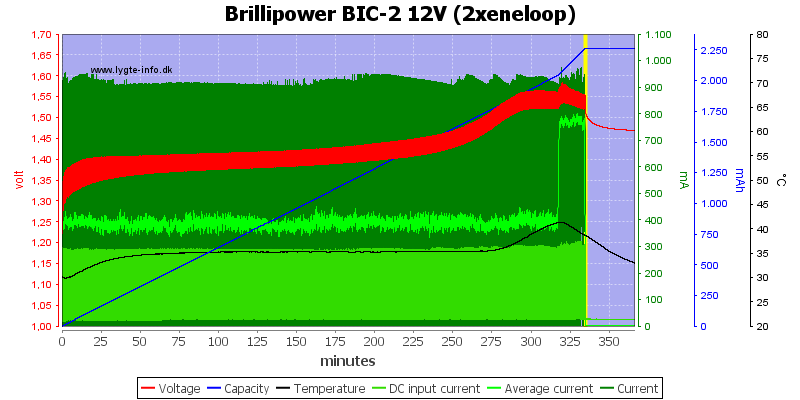
This time the termination time it is slightly better. The charger need about 0.3A when powered from 12V and charging NiMH.
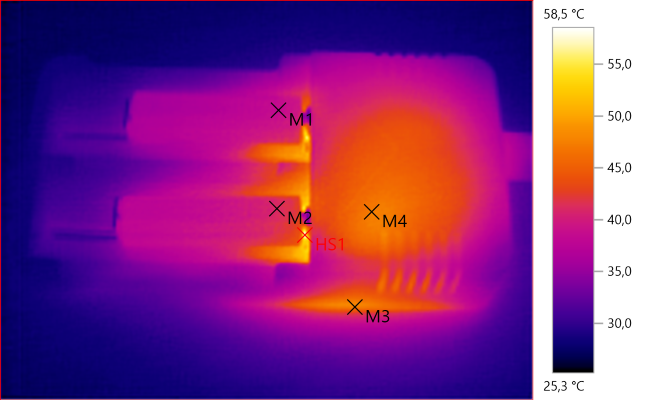
M1: 38,6°C, M2: 41,0°C, M3: 47,3°C, M4: 47,3°C, HS1: 58,5°C

About 2.5 seconds to start charging.
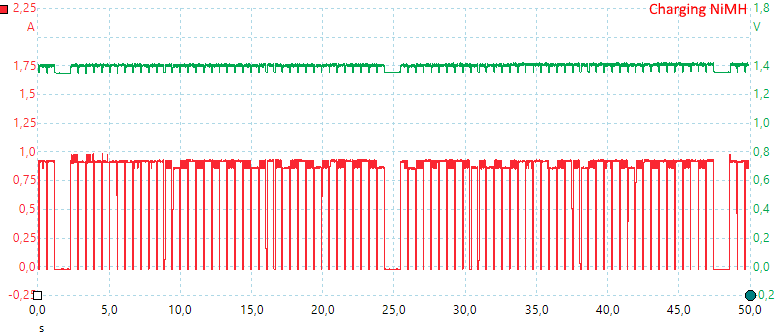
With NiMH it has the same type of pauses as with LiIon
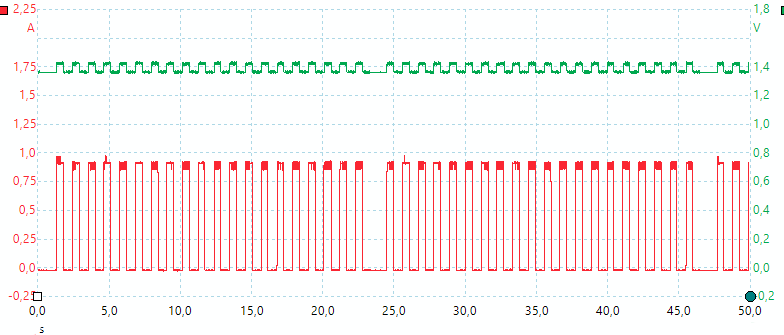
And it also use timesharing when charging two cells.
Testing the charger with 2830 volt and 4242 volt between mains and low volt side, did not show any safety problems.
Conclusion
This is a simple charger with a single charger current that can be either used on one cell or time shared between two cells. The current is too high for small cells. The promised 4.35V charging is missing.
Due to the single current the charger is not good at smaller cells.
The charger do a fairly good charge.
Notes
Here is an explanation on how I did the above charge curves: How do I test a charger
Charge selection table


















































